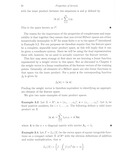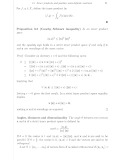书籍详情
![《模式分析的核方法》[35M]百度网盘|亲测有效|pdf下载](/uploads/s0629/ca7271ab31798648.jpg)
![《模式分析的核方法》[35M]百度网盘|亲测有效|pdf下载](/uploads/s0629/ca7271ab31798648.jpg)
模式分析的核方法
- 出版社:世界图书出版公司北京公司
- 出版时间:2020-09
- 热度:6638
- 上架时间:2024-06-30 09:38:03
书籍下载
书籍预览
免责声明
本站支持尊重有效期内的版权/著作权,所有的资源均来自于互联网网友分享或网盘资源,一旦发现资源涉及侵权,将立即删除。希望所有用户一同监督并反馈问题,如有侵权请联系站长或发送邮件到ebook666@outlook.com,本站将立马改正
内容介绍
编辑推荐
·本书既提供了大量的实用算法帮助应用者解决各种领域的实际问题,又是一本供学生和科研人员初学模式分析中核方法的入门导论。
·两位英国科学家作者是国际上极富盛名的人工智能专家。
内容简介
模式分析是从一批数据中寻找普遍关系的过程。它逐渐成为许多学科的核心,从生物信息学到文档检索都有广泛需求。本书所描述的核方法为所有这些学科提供了一个有力统一的框架,推动了可用于各种普遍形式的数据(如字符串、向量、文本等)的各种算法的发展,还可用于寻找各种普遍的关系类型(如排序、分类、回归和聚类等)。书中提供了大量算法、核函数和具体解决方案供各种实际问题选择使用。书中描述了各种核函数,从基本的例子到高等递归核函数,从生成模型导出的核函数(如HMM)到基于动态规划的串匹配核函数,以及用于处理文本文档的特殊核函数等。本书适用于所有从事人工智能、模式识别、机器学习、神经网络及其应用的学生、教师和研究人员,也可供相关领域的科研人员参考。
作者简介
约翰·肖·泰勒(John Shawe-Taylor)目前是英国伦敦大学学院联合国教科文组织人工智能讲席教授,并担任计算机科学系系主任和计算统计和机器学习中心主任。他还协调组织了多个机器学习欧洲联合研究项目,比如NeuroCOLT(“神经计算学习”)项目和PASCAL(“模式分析、统计建模与计算学习”)项目。
内洛·克里斯蒂安尼尼(Nello Cristianini)目前是英国布里斯托尔大学计算机科学系的人工智能教授。他获得过英国皇家学会沃尔夫森杰出研究成就奖和欧洲研究理事会高阶研究基金奖。2014年他被汤森路透列入2002至2012十年间具影响力的科学家名单,2016年被AMiner列入机器学习领域具影响力的百位研究者名单。



